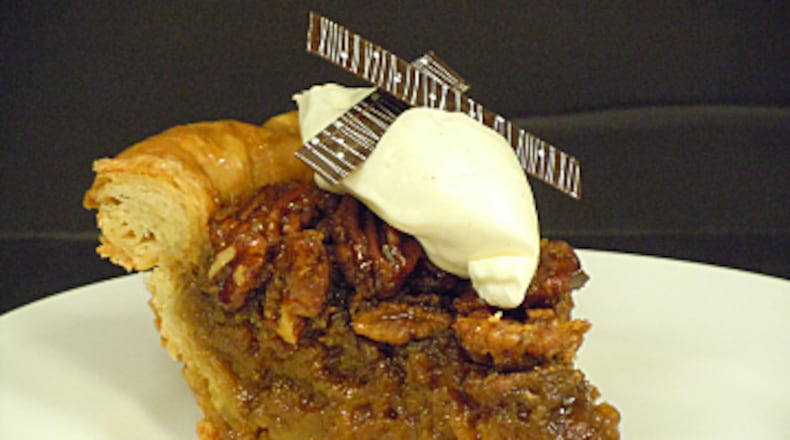Whether you prefer pecan, pumpkin or lemon meringue during your holiday feast, one thing's for sure: It's pie season. How can you ensure your pie crust is perfect? Atlanta's top pie bakers have tips that will help make your holiday dessert memorable for all the right reasons.
It all starts with having the right equipment. Lauren Duxbury of Panbury's Double Crust Pies says an easy pie baking experience requires four essentials: a pie dish, large heavy duty rolling pin, bench knife with measurements and some counter space. If your counter top is rough, consider constructing your crust on a nonstick mat. Carrie Hudson, pastry chef at West Egg Cafe, adds that having a food processor can be helpful, but it isn't necessary.
How do you know which type of crust is right for you? Duxbury recommends choosing the crust that best fits your skill level. "If puff pastry is a daunting task, opt for a simpler short crust or rough puff instead," she says.
What's the secret to getting the perfect crust? Adam Panayiotou, also of Panbury's Double Crust Pies, says the secret lies in the butter you use. "To get a more flaky pastry, you want to choose a butter with a higher moisture content," he says. "This means avoiding those temptingly rich European-style butters that have a high fat content but will not create the texture you want."
What you do next will affect what happens when you cut your pie to serve it. "The key to crust consistency lies in the water," Duxbury says. "Add the water a little at a time to bind the mixture. By adding the water gradually you will avoid the crust becoming too sticky, which will result in a tough pastry." Panayiotou recommends not skimping on water when mixing your crust. "You want just enough for everything to come together," he says, "but don't be scared to put a few extra teaspoons until it looks smooth."
Use your powers of observation. If the pastry looks too crumbly or seems too sticky, it probably is, Panayiotou says. "The same goes for pie filling," he says. "If it looks more like soup than pie, thicken it. If it looks like it will dry out, add a little more liquid. Don't overthink it."
What if the crust starts to disappear? Hudson notes, "The dough needs to relax (chill) at a couple points in the process -- after it is made and after it is placed in the pie pan. Pie dough loves to shrink. Relaxing the dough and par baking it in the pan with plastic/weight can help prevent the disappearing crust."
What's the deal with the filling? To make your pie's filling the best, Duxbury recommends always using fresh ingredients, including real butter.
It's baked, and you're ready to serve. Cut with confidence using the right tools. "A serrated knife and a pie server will help achieve the perfect slice," Hudson says.
Don't stress. Throughout the entire process, Hudson says there is one thing you must not forget: "Don't be too hard on yourself if it doesn't look perfect. Try to enjoy the process. Relax, just like your pie dough needs to."
About the Author
Keep Reading
The Latest
Featured


